Snider-Enfield Restoration
Created on March 4th 2021
Restoration of a Mk III Snider-Enfield Carbine – or, “Sometimes there are things you might wish you hadn’t started……!”
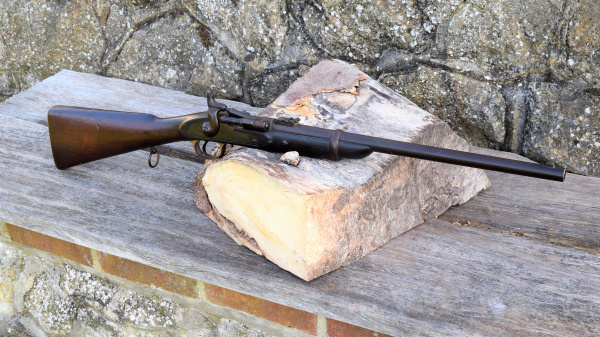
Conflict and 150 years can do a lot of strange things to a gun. This carbine had a wonderful air of the untouched about it as detailed in my page;- http://www.byswordandmusket.co.uk/long-guns/1870-mk-iii-snider-enfield-cavalry-carbine/
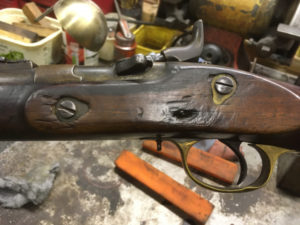
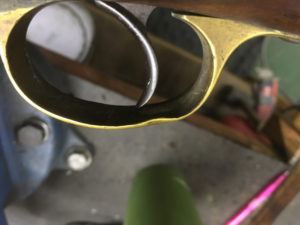
However! this air of the untouched was also hiding a whole world of pain which would soon become apparent on disassembly. Opening these old guns up is rather like opening a time portal – all sorts of extreme things have happened to this little carbine and I dare say that if I had at my disposal a scientific laboratory I would be able to discover all the interesting places it has been around the world. Unfortunately, I have not. So we have to rely upon deduction and wonder at the story it could tell.
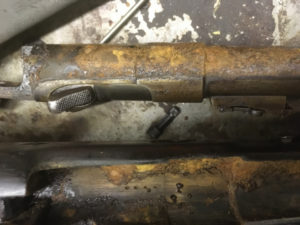
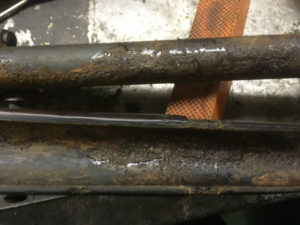
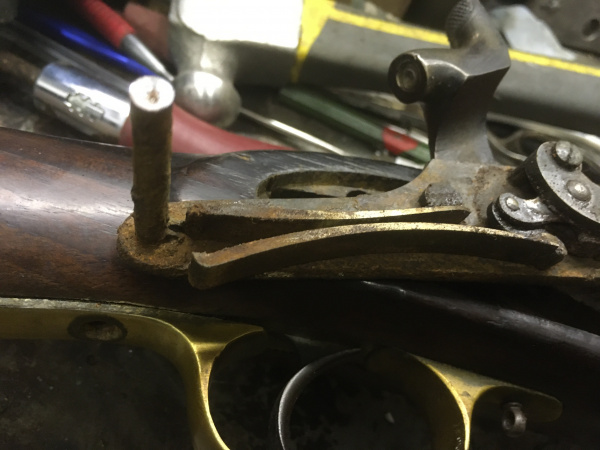
The original brief was sympathetic restoration and repair of historic damage to woodwork. Can of worms comes to mind! To start with the rear lock screw had become one with the brass escutcheon on the obverse to the lock and nothing was going to shift it. Nothing did; so eventually after all possibilities had been exhausted, drastic action had to be taken and the head of the screw drilled out, so releasing the lock and opening Pandora’s box. What was revealed wasn’t pretty. Rust, gunk and a broken main spring; as opposed to the kind of thing I found when I opened up another lock in the past; – https://www.byswordandmusket.co.uk/long-guns/anatomy-of-a-snider-lock/
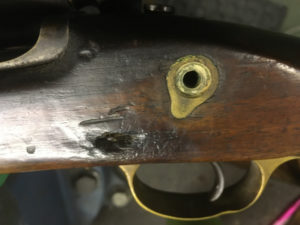
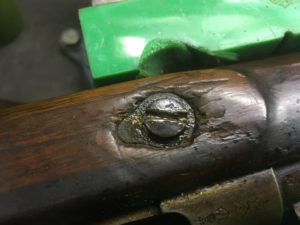
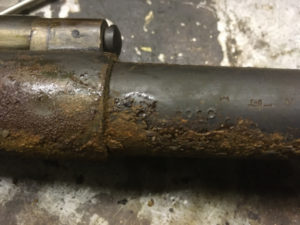
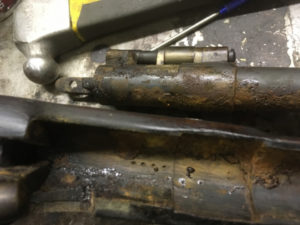
The same deal was to greet me on removal of the barrel – only more so! The woodwork damage in question, mentioned in the earlier brief, was probably caused by a corroded trigger guard retention pin which, being made of iron, had almost exploded and refused to be moved by someone who had inflicted considerable damage upon the stock in his efforts to remove said pin. Result, a crater in the side of the woodwork which resembled either a meteor landing site or an exit wound from the same calibre as this carbine.
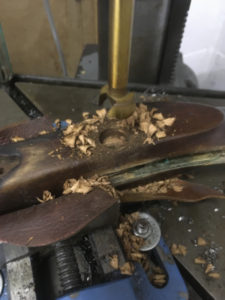
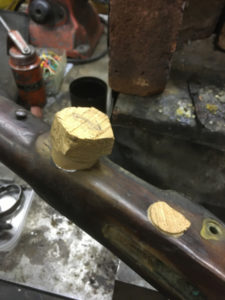
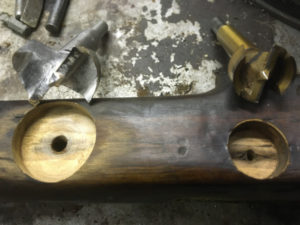
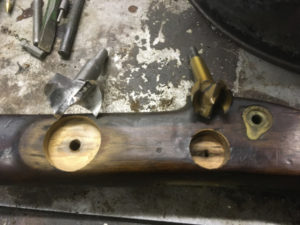
A world of wonders is revealed under the barrel and action. First thought is rust! But that’s not all that lies beneath – a solidified mixture of axel grease, soil, and dust all merging into an interesting sticky mixture attached to both barrel and woodwork. Stubbornly attached I might add. All needed cleaning off and treating so as to halt the same process re-establishing itself again. This is where I become a little bashful about my secrets of the trade, but lets just say; its gone. Removal of the sludge reveals the usual plethora of inspectors marks and Enfield stamps including a date; just simply marked as “9 /70” So we can nail production down to September 1870 which corresponds nicely with the date on the lock.
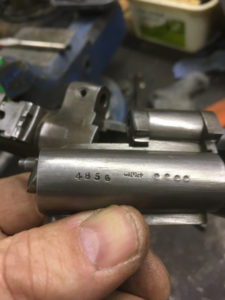
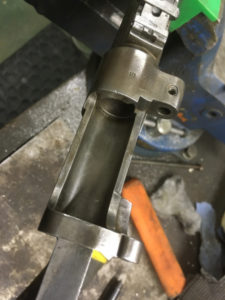
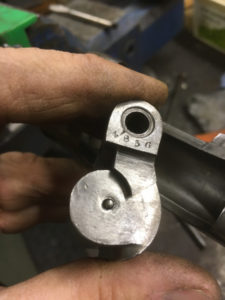
Having cleaned up the action and barrel there is also something else of interest which I start to notice on all the main component parts. Four individual round punch marks – on everything, even the inside of the woodwork. This suggests to me a simple way of keeping individual parts with their original rifles in a situation where mix-ups could occur. It does though, add a feeling of the human touch from many years ago. Somebody took the time to put all those marks there individually, and they did it carefully and neatly. Suggesting some respect for the item they were handling. Its easy to forget that when these weapons were new they were cutting edge technology, the best that a trooper could be issued with.

The lock itself was in a pretty sad state and it was apparent that an immediate strip down and clean was necessary. While this was occurring the search for a main spring was started. On dropping the lock out of the stock, the normal firm thud of the lock arriving on the bench surface was accompanied by the gently tinkle of the broken spring. Somehow, in its undisturbed state the spring had been held in position by the close fit of the letting in around the lock – to the point where it was a complete surprise that it was actually in two parts. It had been functioning as if there was no problem! These springs don’t grow on trees and they don’t sell them down at your lock hardware retailer anymore! The stubborn lock screw was easily removed with full access to it outside the stock.
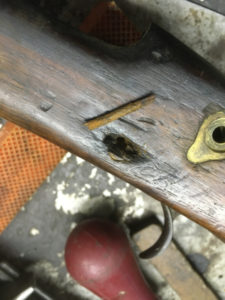
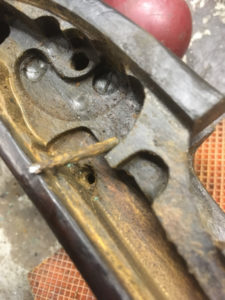
Once all the lock components had been carefully disassembled and cleaned the next stage was to put back together – the pleasing part of the exercise. Meanwhile ! over on the woodwork bench the stock repair is being started. Removal of damaged timber by careful drilling. Replacement of the same with newly turned cross-grain plugs, to an interference fit. Affix with wood adhesive and leave to dry…………. At last the lock is repaired, freshly lubricated and greased to protect. Fully functioning without undue replacement of parts and ready to be refitted into the stock, once the stock-work is complete.
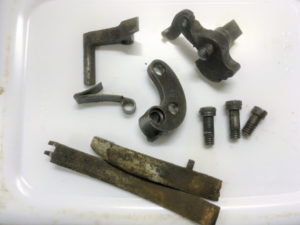
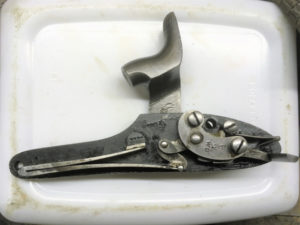

MORE EXCITING INSTALLMENT TO FOLLOW – WATCH THIS SPACE.
Comments Off on Snider-Enfield Restoration